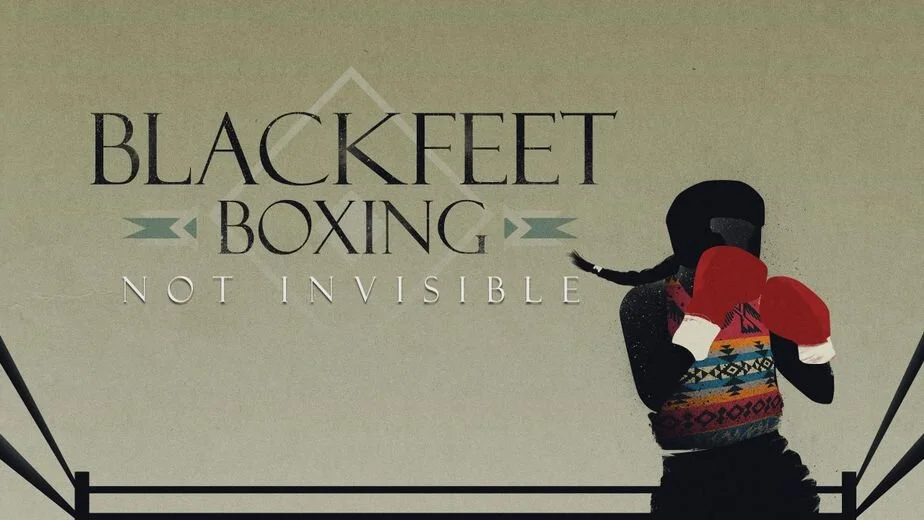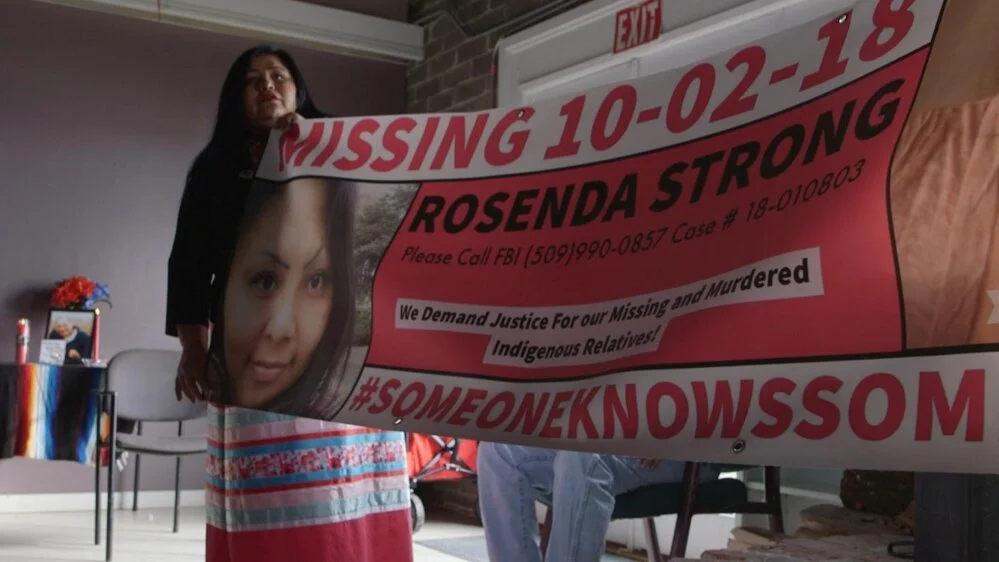Missing and Murdered Indigenous Relatives: Films and Videos to Learn From
The following are a list of films, videos and news reports about the ongoing crisis of Missing and Murdered Indigenous Relatives in the United States. This list is far from comprehensive and we will update as we come across new projects. In the meantime please be sure to check out these films, documentaries and special segments to learn more about the crisis, the families and our missing relatives. Click on the images or titles to watch.
Blackfeet Boxing: Not Invisible
Club in 2003. Since then, he's trained more than 500 boxers on the reservation. Its most important fighters are the young women who come in search of more than a heavy bag. Blackfeet Boxing: Not Invisible is a film about fighting—for respect, identity and acknowledgment. There are no scorecards or knockouts. In a state where 73 indigenous women were missing or murdered in the previous two years, the prize at the Blackfeet Boxing Club is far more vital: survival.
Finding Ashley: A Native American Family’s desperate search for their missing relative (Ashley Loring Heavyrunner)
Ashley Heavyrunner Loring was 20 when she disappeared from the Blackfeet reservation in Montana in June 2017. Her family has been searching for her ever since. Ashley was one of more than 5,000 Native American women listed missing in 2017.
The Search: Missing and Murdered Indigenous Women – The Fault Lines
Indigenous women in the United States experience some of the highest rates of violence and murder in the country, according to federal data.
Tribes and advocates attribute this to a confluence of factors - institutional racism, a lack of resources for tribes, and complicated jurisdictions that undermine tribal sovereignty. All of this has led to what tribal and federal officials have called a crisis of missing and murdered indigenous women in the US.
So why are indigenous women going missing in the US and what more could be done to address the problem? Fault Lines travelled across the western US to Washington, Montana and New Mexico to find out.
Two Spirits
Two Spirits interweaves the tragic story of a mother’s loss of her son with a revealing look at a time when the world wasn’t simply divided into male and female and many Native American cultures held places of honor for people of integrated genders.
Fred Martinez was a male-bodied person with a feminine nature, a special gift according to his ancient Navajo culture. But the place where two discriminations meet is a dangerous place to live, and Fred became one of the youngest hate-crime victims in modern history when he was brutally murdered at sixteen. Between tradition and controversy, sex and spirit, and freedom and fear, lives the truth—the bravest choice you can make is to be yourself .
Silent No More Documentary
“Silent No More” is a documentary that seeks to expose the epidemic of Missing and Murdered Indigenous women in the United States. It was filmed and edited by a 19-year-old student at Duke University who spent the summer as an intern for White Bison, Inc. The film includes heart wrenching interviews with the family members of Native women who have either been murdered or are still missing.
Why Are Missing And Murdered Indigenous Women Cases Being Ignored? | Between The Lines
Over the past century, thousands of native women and girls have gone missing in the United States and Canada, yet due to a lack of comprehensive records of crimes against them, their stories rarely make it to the nightly news. Despite other women’s voices being amplified in the era of #MeToo, indigenous women are quietly going missing in life, in the media and in the data.
Indigenous Women Keep Going Missing in Montana
There’s an epidemic of missing and murdered indigenous women, and Native communities have had enough.
Searchers: Highway of Tears
You can’t help but shudder at the sinister nickname for British Columbia’s Provincial AutoRoute 16, known as “The Highway of Tears,” which is both a trucking passage and the winding graveyard of up to 42 aboriginal women—most of which assumed murdered by a series of active serial killers. In fact, the RCMP, Canada’s famous Mounties and the chief police force investigating the murders—believes there are active serial killers currently operating along the highway. The RCMP puts the official number of women who have been murdered along the highway at 18.
Running west to east through some of the most remote terrain in North America, passing by desolate First Nations reserves and logging towns, the highway has become synonymous with the endemic violence towards Native women in Canada: They’re five times more likely than any other ethnicity in the country to be raped or murdered. It really wasn’t until a white tree planter was murdered and discovered on the highway in 2002, that the RCMP finally launched a full-scale investigation. The taskforce, called EPANA, has had its funding cut several times in the last few years and no one is sure what they are doing now.
Ray Michalko, a former RCMP detective who quit the force, is now one of the only men on the job as a private investigator. He works directly with the families of missing or murdered indigenous women on his own dime. He takes VICE on a tour of, basically, Canada’s Valley of Death and connects us with the families who have turned to him after sometimes decades of stalled police investigations.











